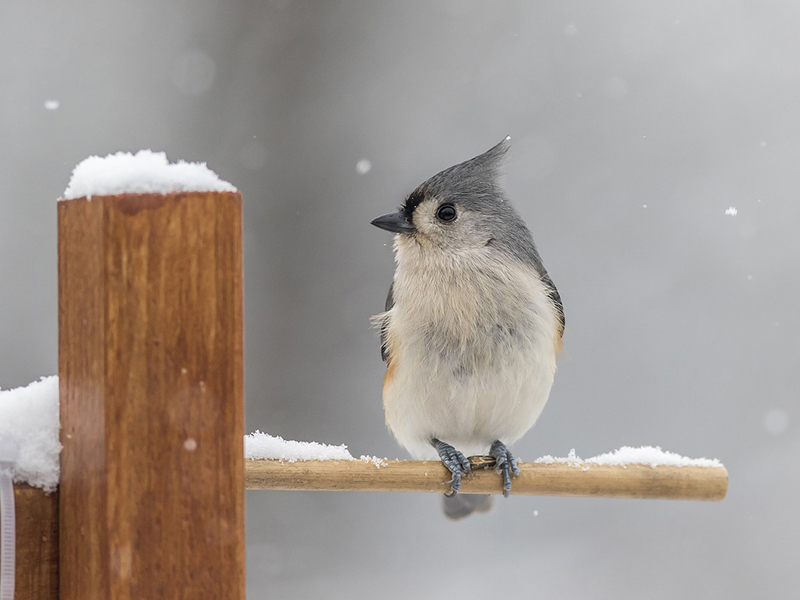
January 06, 2025| Education, Environment
By: Patrick Krudop
Welcome back to another edition of Creature Feature, where we explore the wildlife that call Lake Hopatcong and New Jersey home! Whether you’re a regular reader or just tuning in for the first time, feel free to check out past articles on everything from fish eating birds and the fish they eat, to rodents, small mammals, and sleepy hibernating critters.
As temperatures drop and trees grow bare, it's the perfect time to explore the creatures that call them home. With fewer leaves to obscure the view, winter offers a unique opportunity to spot birds that “overwinter” – that is to stay in New Jersey even through the cold months. Whether you see them at your bird feeder, through your binoculars, or while you’re out on a nice winter walk, these birds bring a lively touch to the quiet season. Let’s soar into this month’s Creature Feature!
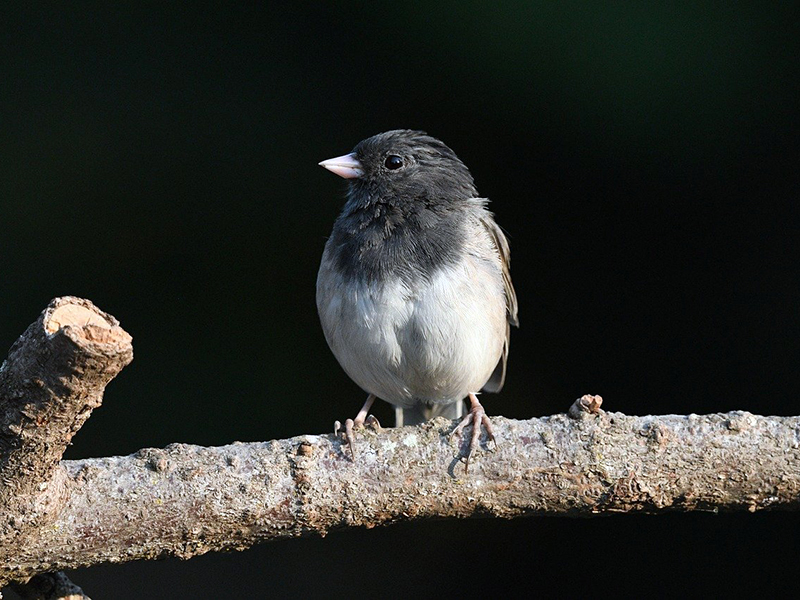 |
 |
The dark-eyed junco (Junco hyemalis) is one of the most abundant bird species in North America. Found from Mexico to Alaska and across the continent from coast to coast, this resilient species is estimated to number around 630 million individuals, making it the second most abundant bird in North America after the American robin.
With their signature dark eyes and head, pale pink beak, and tail feathers that flash white when they fly, dark-eyed juncos are relatively easy to identify among wintering bird species. Known for being a staple species in New Jersey during the winter months, they primarily survive by foraging for seeds, though they supplement their diet with insects in warmer seasons. Remarkably, juncos can even be seen digging into snow to uncover seeds hidden beneath its surface.
If you maintain a winter bird feeder, chances are high that you’ll spot some juncos—and you might even be seeing the same individuals year after year. These birds are creatures of habit, often returning to the same wintering grounds annually and staying within a 10-acre radius of their chosen area.
The longevity of these birds can also surprise. The oldest recorded junco, banded in West Virginia, lived to be 11 years old. From 1991 to 2001, it returned to the same bird banding station each year, a testament to the species’ remarkable site fidelity.
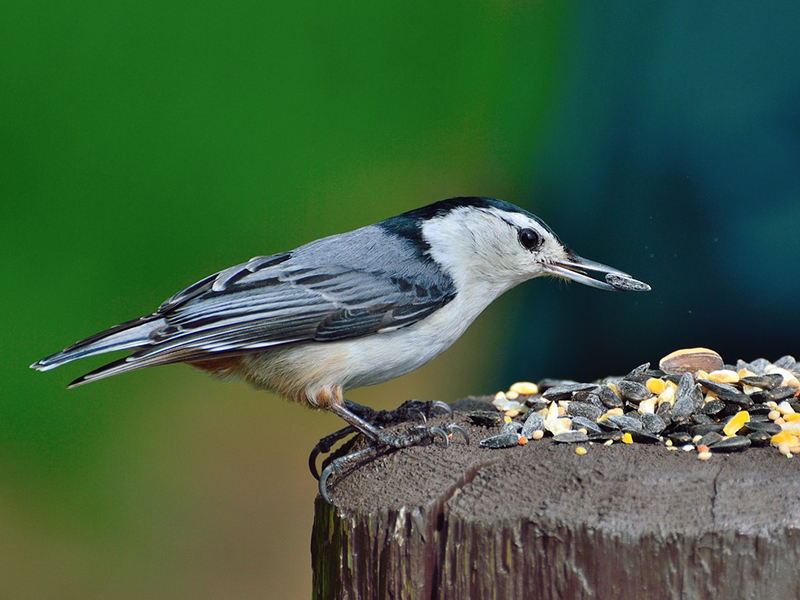 |
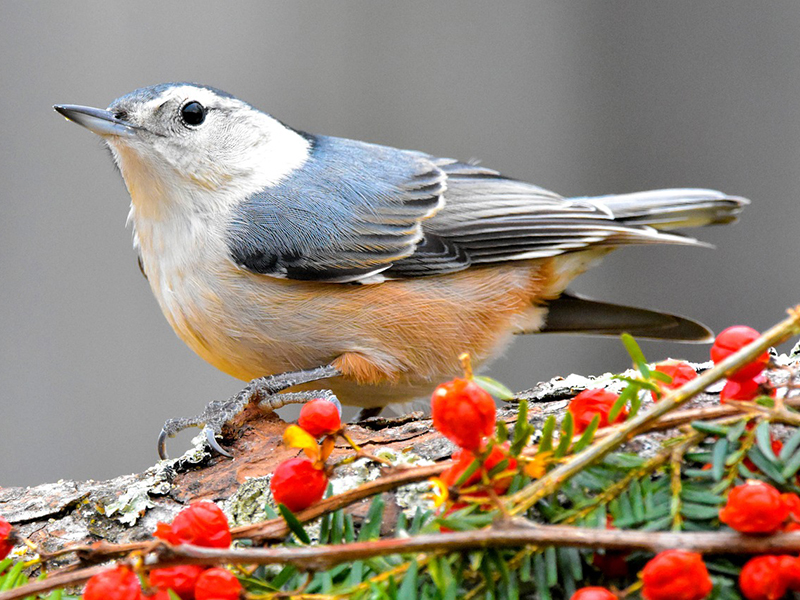 |
Named for their iconic habit of using their beaks to extract or “hatch” nuts open, the white-breasted nuthatch (Sitta carolinensis) is another very common species you may see this winter. If you have a bird feeder, you might find yourself wondering, “How are they eating all this feed so quickly?” The answer may lie in the forward-thinking nature of the White-Breasted Nuthatch. When presented with an abundant supply of nuts or seeds, these birds stash their bounty in the crevices of tree bark, creating a personal pantry to revisit throughout the cold months.
White-breasted nuthatches are also known for their strong pair bonds, often sticking close to their mates year-round. This behavior can lead to some amusing interactions. When a male is separated from his mate, he spends most of his time on high alert, scanning for predators. Once reunited, however, his focus shifts to foraging, sometimes pushing his mate out of prime feeding spots. The female, in turn, has developed her own clever strategy: when she’s alone, she prioritizes feeding, but when her mate is around, she keeps a close eye on him to avoid being displaced.
One of the easiest ways to identify a white-breasted nuthatch is by observing its behavior. These birds are often spotted “walking” upside-down, moving headfirst down tree trunks. While this acrobatic skill is often associated with woodpeckers, nuthatches excel at it thanks to their anatomy. A specialized toe on the back of their feet, called the hallux, acts like a sharp talon, allowing them to grip tree bark and navigate vertically with ease.
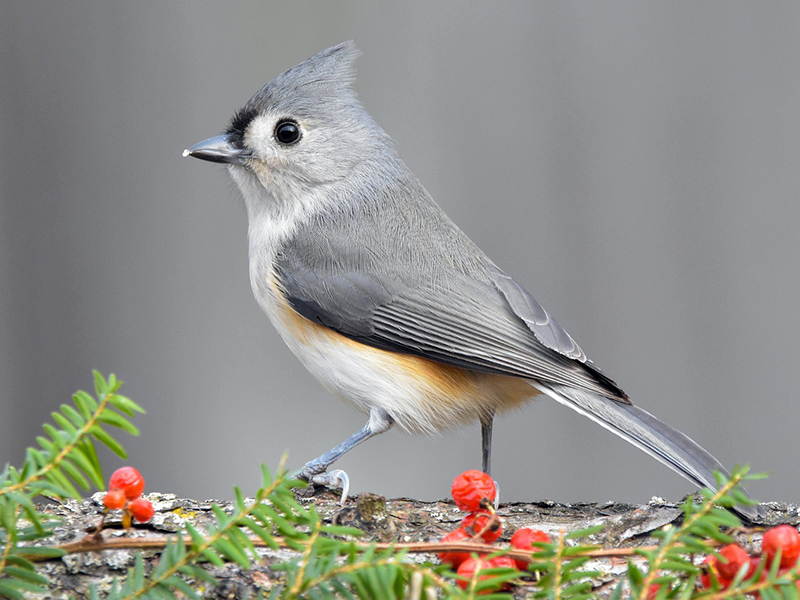 |
 |
The tufted titmouse (Baeolophus bicolor) is a year-round resident of New Jersey but as many bird species migrate south for the winter, these charming birds become even more noticeable. Easily identifiable by its very stylish mohawk, they almost look like a blue jay that’s lost its color! Despite the resemblance, they belong to entirely different families: the tufted titmouse is part of the Paridae family (chickadees), while the blue jay is a member of the Corvidae family (crows).
Other than looks, the easiest way to identify whether there might be a tufted titmouse nearby is to listen for its iconic call. Often described as a clear and repetitive “peter-peter-peter,” it is a simple call to learn and identify, even for novice birders. Like many birds featured in this Creature Feature, tufted titmice prepare for winter by caching surplus nuts and seeds in the fall. This clever habit ensures they maintain a healthy diet, enabling them to breed successfully in the spring. Occasionally, young titmice from a previous brood stick around for an extra year to help their parents raise the next generation. This cooperative behavior is more common among female offspring, who benefit from practicing nest care before starting their own families—talk about sibling dedication!
Environmentally, the tufted titmouse provides an important lesson on the usage of everything in nature. These birds do not create their own nesting cavities in trees or other settings. Instead, they rely on previously excavated holes from woodpeckers, or other birds, often settling in dead trees. While some might see dead trees as an inconvenience or eyesore, they play a vital role in forest ecosystems by providing essential habitats for cavity-nesting birds like the tufted titmouse. This serves as a reminder that what seems unimportant to us may be critical for wildlife, highlighting the importance of preserving natural habitats, including deadwood.
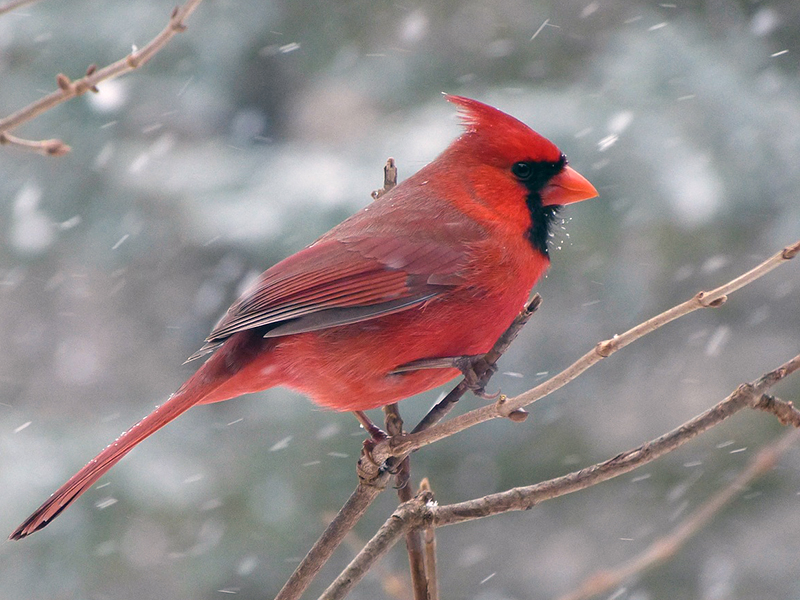 |
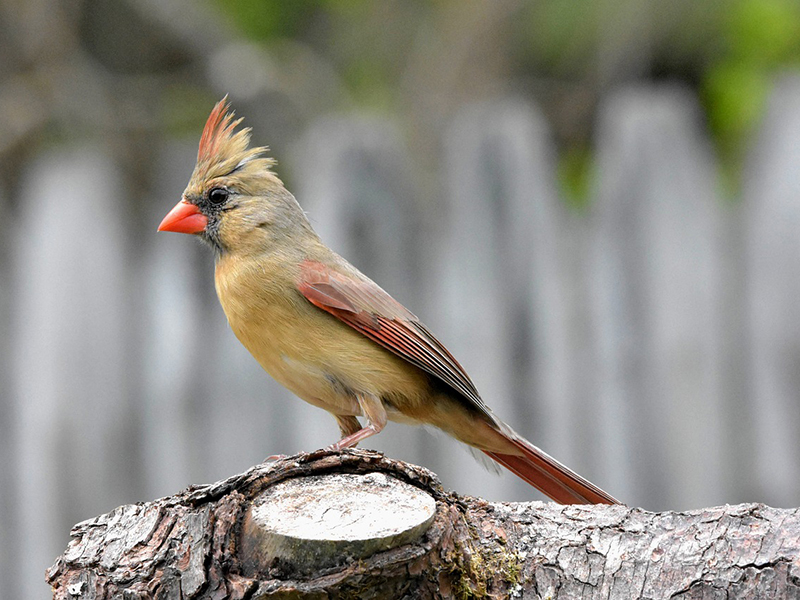 |
The striking red of a cardinal in the stark winter snowscape can be a stunning piece of winter imagery. It’s no wonder this bird is so beloved in New Jersey—so much so that it has become a symbol of hope, new beginnings, and various other spiritual meanings. Folklore aside, the northern cardinal (Cardinalis cardinalis) is one of the most iconic bird species in New Jersey. In addition to their stunning feathers, cardinals exhibit some unique behaviors rarely seen in other songbirds.
For example, in most North American songbirds, it is the male who sings to communicate with a mate or attract a prospective one. Cardinals, however, break from this pattern. The female cardinal also sings, using vocalizations to communicate with her mate when he is away from the nest. These calls serve various purposes, such as warning of nearby predators, signaling that the nest is safe, or requesting food. Additionally, these calls help the female keep males—who are typically bright red and highly visible—away from the nest when danger looms.
That bright red coloration, while striking, makes the males more vulnerable to predators. However, it also serves an important evolutionary purpose. The bright plumage is meant to attract mates, but it’s more than just a matter of appearance. Males with such vivid coloring demonstrate their fitness by surviving despite the increased risk of predation. In essence, if a brightly colored male manages to reach reproductive age, it suggests that he possesses the strength and resilience to pass on healthy genes, ensuring better chances for offspring.
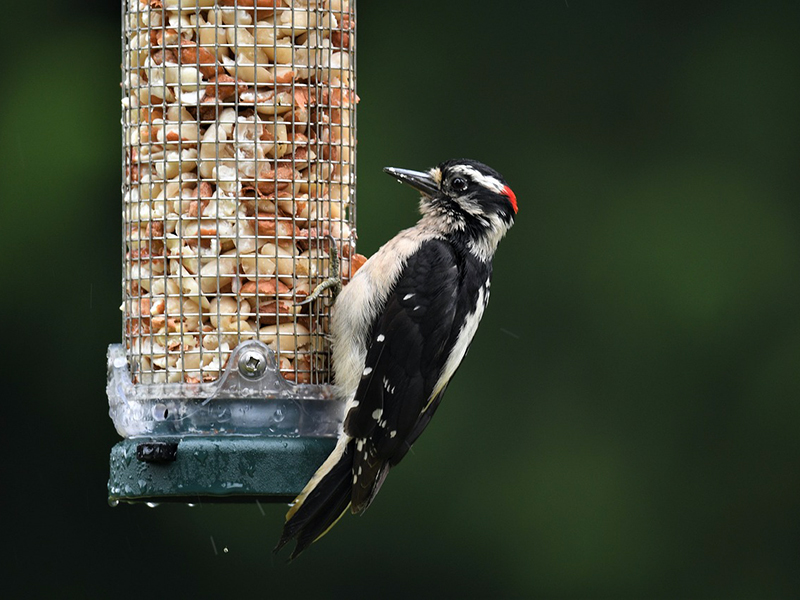 |
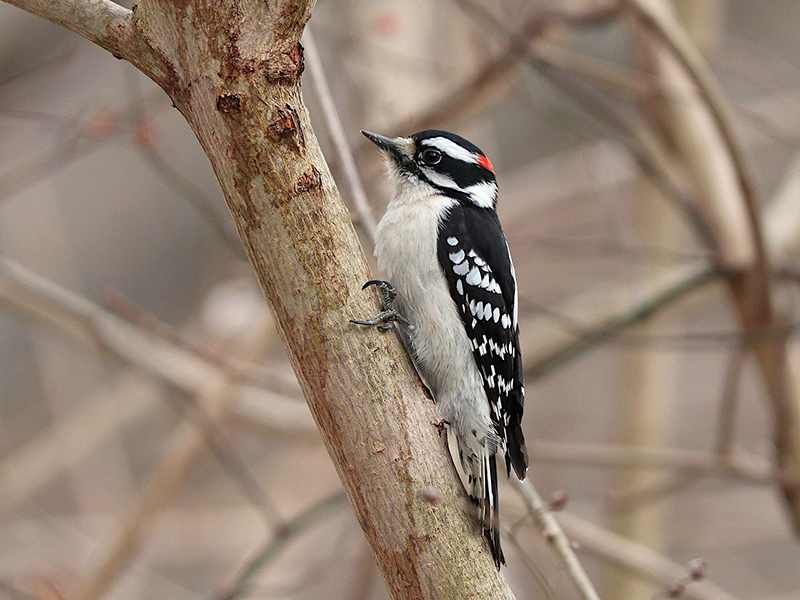 |
Oftentimes heard more often than seen, the downy woodpecker is a classic you may see in the wintertime, particularly if you have a suet bird feeder. Though they may seem elusive due to their small size, they are actually quite common throughout New Jersey. With their signature red nape (the back of the neck), downy woodpeckers are relatively easy to identify, especially when compared to other species—though they are often mistaken for their larger relatives, the hairy woodpecker. This confusion arises due to their similar physical traits, with the key difference being their size. But fear not! The downy woodpecker is much more frequently observed than its larger cousin.
These small woodpeckers typically nest in dead trees, anywhere between 5 and 60 feet off the ground, highlighting the importance of leaving standing trees, even those that may appear lifeless, for wildlife. If you’re searching for their nesting cavities, make sure you bring your binoculars, as these clever birds use different types of lichen, vegetations, or fungi, making them surprisingly discreet.
Many people mistake the loud drumming sound woodpeckers make as a way to search for insects. However, when foraging for food—typically beetles, ants, caterpillars, or other insects—they tend to be much quieter. The prey is often found on the outer surface of branches, leaf stems, or inside bark nooks, requiring no loud drumming. Instead, drumming serves as a communication tool for attracting mates or establishing territory. In this case, the louder, the better!
At Lake Hopatcong and throughout New Jersey, you may have the privilege of witnessing the beauty of these overwintering birds. Whether you’re a seasoned naturalist or simply curious about local wildlife there’s always something new to discover about the fascinating creatures that call Lake Hopatcong home. Every footprint, from the tiniest to the largest, helps shape the vibrant life of our lake, and even the smallest presence can have a big impact.
I hope you’ve enjoyed learning about some of the bird species we have at Lake Hopatcong. Perhaps this article has inspired you to explore the wonders of nature further, whether by reading a book, visiting a website, or simply stepping outside! If you have any wildlife photos from Lake Hopatcong, or if there’s a critter you’d like to see featured in an upcoming Creature Feature, please send your submissions to info@lakehopatcongfoundation.org. See you next time!

December 04, 2024
Education, Environment

October 21, 2024
Education, Environment
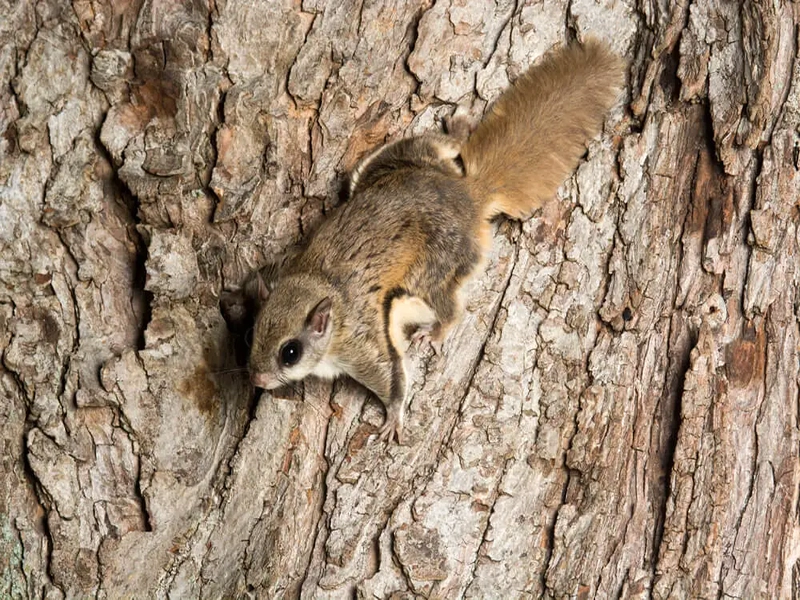
October 04, 2024
Education, Environment